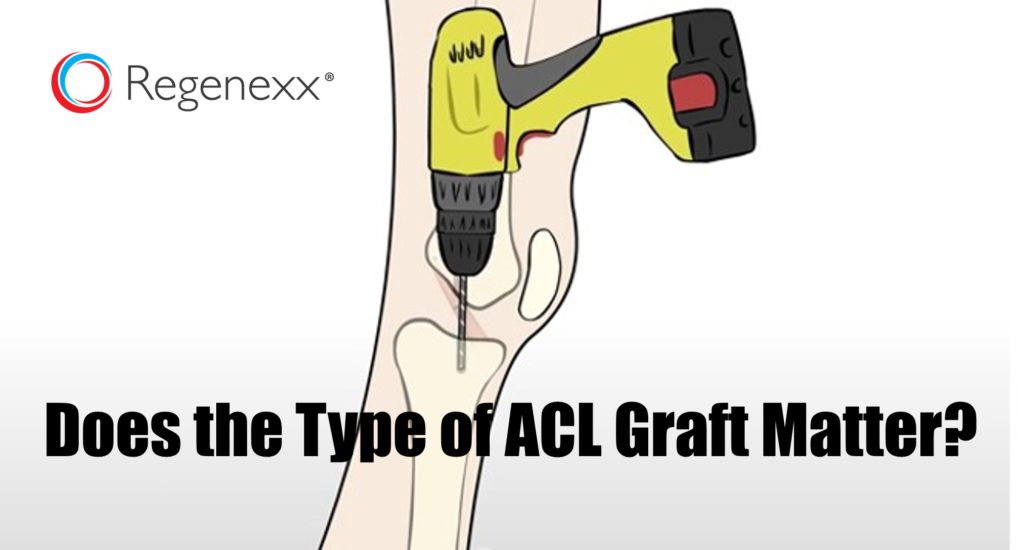Knee ACL Surgery Graft Choices: Someone Else’s ACL has Three Times the Failure Rate!
What are the right knee ACL surgery graft choices? For example, do you use someone else’s tissue (allograft) or your own tendon refashioned as an ACL ligament (autograft). Is there a difference? Based on a recent long-term study of ACL allografts versus autografts, the answer seems to be a resounding, “Yes”.
First, a knee ACL surgery is performed when a torn ACL ligament is ripped out surgically and a new ligament is installed. One of the big problems with the surgery in general is that the new ligament goes in at a much steeper angle than the original equipment. In addition, the new surgically installed ACL ligament has no ability to sense stretch so the knee loses proprioception. In addition, a large percentage of patients get arthritis despite the ACL surgery. As a result, we often recommend to our patients that they consider newer precise biologic injection options like stem cells before considering a surgical ACL replacement. However, let’s say that you still need the ligament replaced. A new study just presented at the American Academy of Orthopaedic Surgeons Annual Meeting just put it’s hat in the ring to answer the question of whether an allograft or autograft ACL was better.
The researchers looked at 100 surgeries in young patients (ages 26-28) using either a tibialis posterior allograft or a hamstring autograft from the patient. The grafts were fresh frozen and the patients were randomized (meaning the surgeons didn’t pick who got which ACL type). The allograft group failed at three times the rate of the autograft hamstrings tendon group, which was different from other less well designed studies that had shown they were the same.
Why did they see this poor showing for allografts? First, while surgeons have thought for years that using someone else’s ligament or tendon isn’t rejected, there could be some minor rejection of the foreign tissue. Second, and perhaps more likely, the preparation of the graft could be causing the difference. For example, allografts are often irradiated to kill any possible communicable diseases from the donor. A recent study showed a higher failure rate in allograft ACLs that were irradiated versus those that were not.
The upshot? Avoid the surgery altogether by using your own stem cells precisely injected into the ACL tear to help the ligament heal. However, if your tear is beyond that scope, use your own hamstrings tendon for now to replace the ligament, as nobody wants to undergo a big surgery with big downtime and not give that new ACL its best shot at thriving!

NOTE: This blog post provides general information to help the reader better understand regenerative medicine, musculoskeletal health, and related subjects. All content provided in this blog, website, or any linked materials, including text, graphics, images, patient profiles, outcomes, and information, are not intended and should not be considered or used as a substitute for medical advice, diagnosis, or treatment. Please always consult with a professional and certified healthcare provider to discuss if a treatment is right for you.

